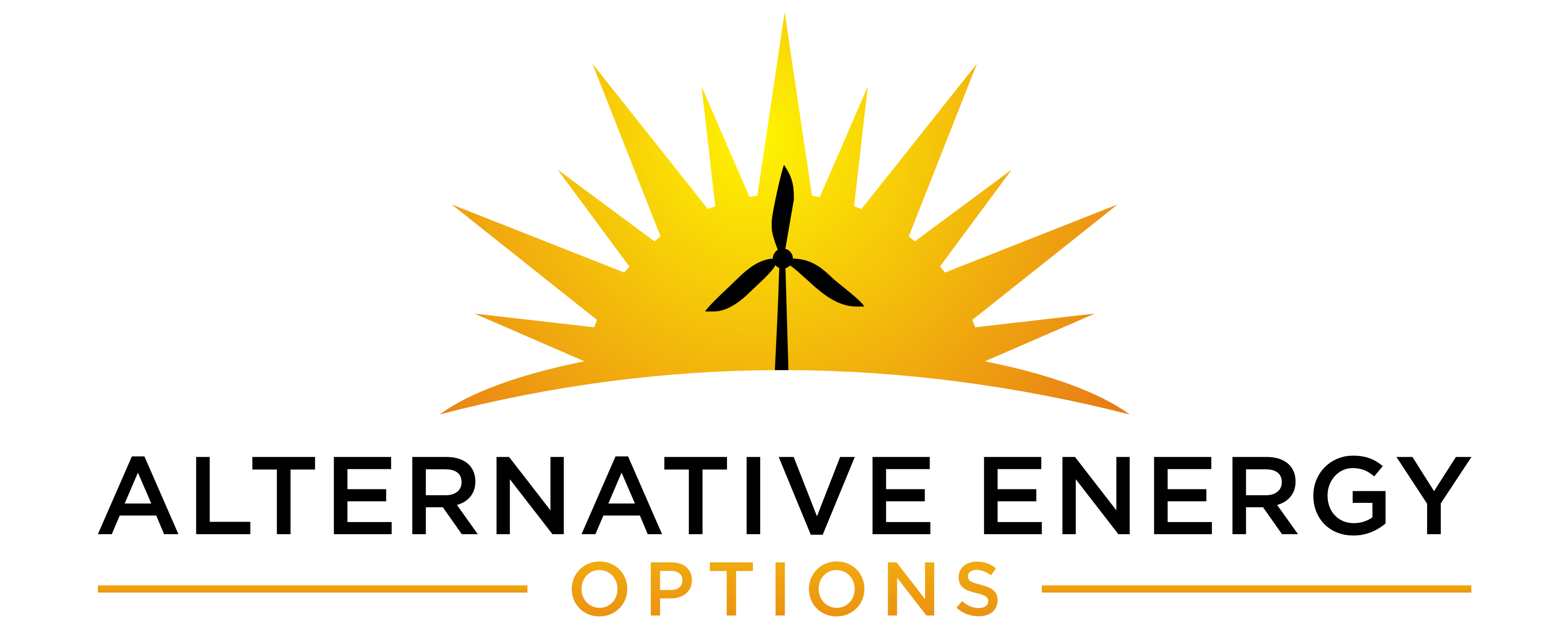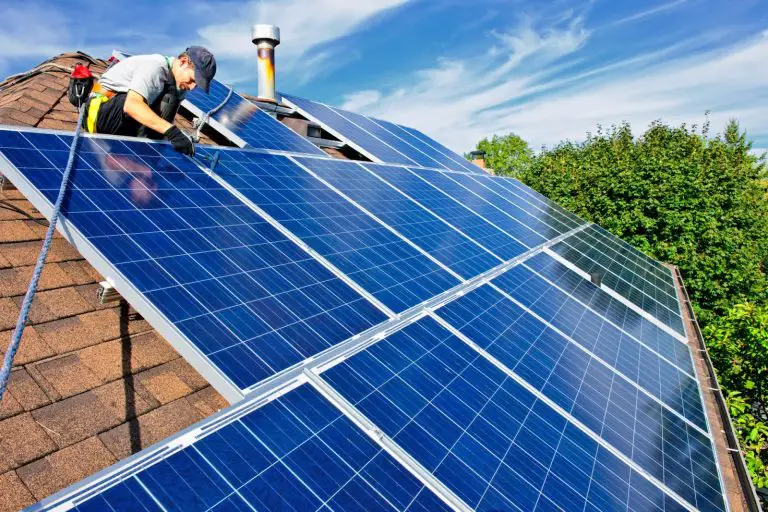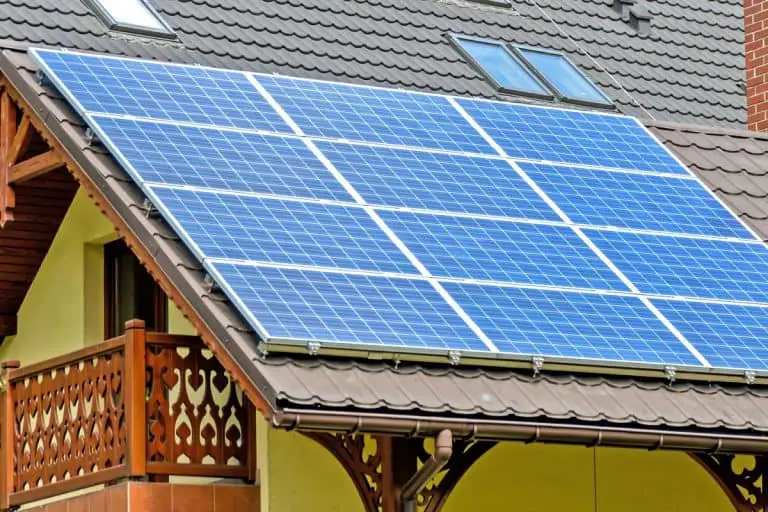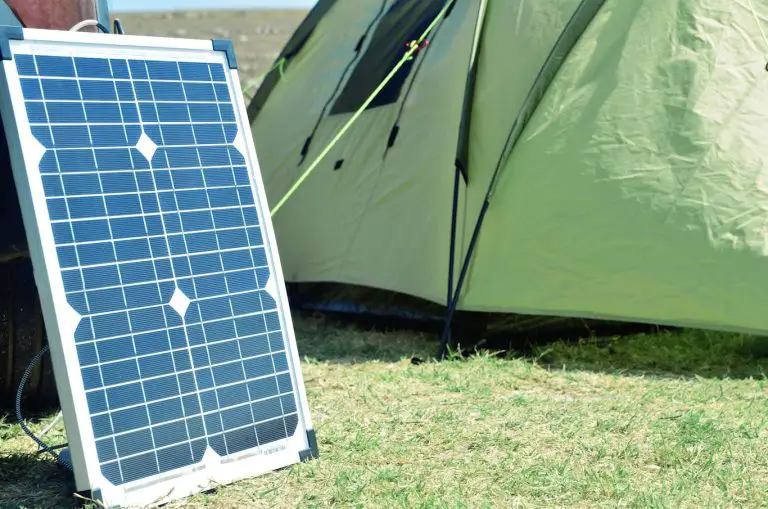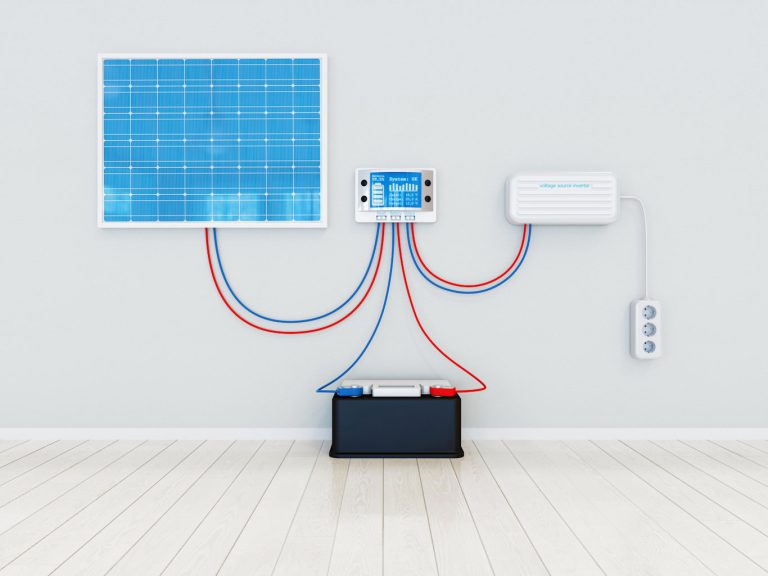Are Solar Fans Worth It? (Let’s Find Out)
Solar fans are very convenient because they are powered by solar energy. Fans can provide excellent airflow in the house, significantly relieving the scorching weather.
That said, there are also drawbacks to solar fans. This article goes over all the positive points of using solar fans and the opposing sides, so you can decide whether it is worth using them.
What Is A Solar-Powered Fan?
A solar fan is simply a fan that is powered by solar energy instead of the typical electricity coming from the grid. There are many types of solar fans; some are portable, and others are bigger and connected to solar panels fixed on a roof.
The fan is generally smaller and not so heavy if they are portable, and the solar panels are portable. Some solar fans have batteries, while others can take the energy directly from the solar panels and do not work if not connected.
Solar fans run throughout the day using solar energy; they do not require another power source to get going if there is enough sunlight.
What Are The Advantages Of Solar Fans?
The first to examine to decide if solar fans are worth it are the advantages of using them. Many people use solar-powered fans to economize on electric bills or because they can also be used outdoors where electricity is unavailable.
But there are more advantages to using solar-powered fans.
Here are the main advantages of solar fans:
Environmentally Friendly
Solar fans do not produce any carbon footprint to operate. While you can use them for as long as needed, they still do not damage the environment since they use only sunlight, and the solar panels generally last for a long time before you need to replace them.
Can Keep The Environment Cool
Although a fan is not sending cold air, it can still create an airflow, which cools down the environment or feels that way. So a fan is not lowering the temperature, but the airflow created makes things more comfortable.
You can compare it to the sensation of the wind getting into a moving car with an open window. The chilling effects of the moving air make people feel that the temperature is lower than it is.
As a general rule of thumb, you can use a fan when the outdoor temperature is cooler than the indoor (or the indoor air temperature is below 95 °F (ca. 35 degrees Celsius), especially if you place the fan in a window. In this case, it can blow cooler air from the outside to the inside.
If the temperature is above 95 °F, a fan could make a body gain heat. However, even in this situation, the airflow is far better to make the room comfortable than no air at all.
Save Money
The most evident advantage of a solar fan is the lack of costs. Since they run on solar energy, homeowners do not spend even a penny on operating their fans. The other saving money aspect is the simplicity of installation.
Furthermore, paying an electrician to install a solar fan is unnecessary, and homeowners can also economize on this aspect. Although the initial investment can be costly, the lower consumption makes up for it over a more extended period.
Using an attic fan to cool the top of the house can signify that your AC doesn’t have to run as hard to cool the rest since it doesn’t have to fight with the hot air from the top.
Low Maintenance
Solar fans do not require huge maintenance; once the fan is connected to the solar panels, both do not need much attention to function. Regular cleaning and routine check-ups are sufficient to make them work for a long time.
Government Credits
Sometimes, the government or the state offers rewards or tax credits for installing a solar fan. The requirement could change yearly, so you must conduct a routine check. Some tax credits can get up to 30%, and if you plan to invest in solar, it can be a great return on top of the lower energy costs.
Portability
Another great advantage of the solar fan is its portability. Solar fan models are lightweight and connected to portable panels, making them perfect for outdoor trips and adventures.
Solar fans are perfect if you want a fan to use in places without electricity. In addition, some models are sold with compatible panels ready to be connected and used in outdoor environments.
What Are The Disadvantages Of Solar Fans?
If you want to determine if solar fans are worth it or not, you should consider the disadvantages too.
Here are the main disadvantages:
Initial Investment
The initial investment to get a solar fan set up can be considerable, and not everyone is willing to or can do it.
In addition, solar panels alone can be pretty expensive, and the costs might vary depending on the number of fans used in the house and the necessary solar panels to power them.
Although you will recoup the money invested, it can take a long time to get this done, and it can take even more time to get an economic advantage.
One Fan Might Not Be Enough
Depending on the size of the house, one fan might not be enough to get enough airflow going in the house. In some cases, even three fans might be necessary. Sometimes, it is essential to have an attic fan and other fans around the house.
In this last case, the investment required is even higher.
Works Only With Sunlight
The most obvious disadvantage is the dependence on sunlight. Solar energy products only work when there is sunlight. Cloudy days, or any other obstacle that prevents sunlight from reaching the solar panels, will make the fan stop working.
Battery storage is an excellent solution to this problem and can make the fan work through the night. But, to install battery storage, you must increase the initial investment.
Are Solar Attic Fans Any Good?
Solar attic fans effectively move hot air out of the attic and replace it with cooler and fresh air from the outside. In general, cold air is at the bottom, warm air is at the top, and the fan makes air circulation happen by forcing the hot air out.
Solar fans work simply: the sun hits the solar panels, which generate the electricity necessary to make the fans move.
Why Are Solar Fans Necessary?
There are many reasons for the necessity of a solar attic fan. The main reasons are energy saving and the maintenance of the house’s structure.
In summer, during the hottest days, the temperature in the attic can be extreme (even reach 150 F). If that happens, the heat can radiate through the house, making it very uncomfortable for people to stay home.
But it also means you must consume more air conditioning to cool the rest of the house. In addition, extreme heat can damage the roof, and humidity can favor mold growth.
It is because moisture can build up without ventilation in the attic, causing molding and wood roots. To prevent it from happening, proper ventilation must occur in the attic.
How To Make Solar Attic Fans More Effective
Proper Attic Insulation
If there is no proper insulation in the attic, warm air can get through the various cracks. In summer, the hot air will go up into the attic, and in winter will get into the house, making the work of the fan way more complicated.
Insulation will make the fan more effective. In addition, if you use the fan in winter too, to keep the ventilation going, insulation is essential to make the fan work more effectively even with a cold temperature.
Few Fans Compared With The Space They Are Serving
If the fan has to cover a big surface, it will not work to cool the attic efficiently. In this case, it is not the fan that is not working, but the attic requires two or more fans to cover the space. As a general rule of thumb, you can expect a fan to serve fairly a 1000-square feet attic.
Bigger attics require more fans.
The Number And Efficiency Of The Solar Panels Can Limit The Efficiency Of A Fan
The solar panels must provide enough electricity for the fan to work all day. In the case of clouds, solar panels can still provide energy in lower quantities.
If the solar panels are too few or have smaller surfaces, they can’t provide enough electricity to make the fan work.
When installing solar panels, it is always better to install panels that can provide more energy than the one you need to predict cloudy days.
Why Is It Better To Use A Solar Attic Fan Than Air Conditioning?
It has several advantages to getting a solar attic fan instead of using the air conditioning for this area. The first advantage is the lack of noise since attic fans do not make loud noises as air conditioners do.
Solar attic fans are way cheaper than installing a complete air conditioner system and can have a significant impact on lowering the temperature. In addition, since they use solar panels to draw energy, they do not even create running costs.
Installing a solar attic fan is relatively easy for homeowners; they do not require a complex wiring system and do not require substantial structural changes.
Main Benefits Of Solar Attic Fans
- They are efficient
- Help protect the house from damages
- Are safe
- You can get a tax credit
Solar attic fans do the intended job, and you can expect them to be efficient if they cover the space they are designed for. In addition, not setting up an attic fan can be costly in terms of damage to the roof. However, a fan can prevent expensive future repairs.
A solar attic fan could qualify for tax credit incentives, allowing further saving and safer than a typical electrical-powered fan.
What To Look For In A Solar Fan?
There are many types of solar panels. Therefore the best way to decide which fan is best for you is to figure out where you need one and what you want to do with it. For example, do you want a portable solar fan to bring outdoors?
Or do you want a fan fixed for the attic, a ceiling fan for a big room, or an indoor fan to place strategically? Figuring those things out can help determine the fan’s size and other details.
Solar-Powered Fans With Different Purposes
- Ceiling fans
- Attic fans
- Portable fans or patio fans (different sizes and models)
- Farms fans
Attic Fans
Attic fans are best suited for use in milder climates because they push fresh air from the outside to the inside. The ceiling fan comes in different sizes and is typically used to ventilate larger rooms.
Outdoor Solar Fans
Outdoors or solar fans on patios are smaller and portable. Typically are attached and sold with a solar panel that can power the fan directly. The size of the entire kit and the weight are designed for each use and portability.
If you use a fan indoors, you should ensure that the fan can cover the size of the room; otherwise, it is useless and ineffective. Another essential consideration is the location of the solar fan.
If you place it inside, you have to position it near a window or near a place where the sun can reach the solar panel connected to the fan. The size of the fan is an essential factor not only for the volume but for the noise level.
Bigger fans are noisy, and although they relieve the hot temperature, they can be annoying and disturbing. Furthermore, larger fans consume way more and require bigger solar panels.
Which Features Should You Look For In A Solar Attic Fan?
Solar attic fans come with different features; in choosing the best one for you, you could check they have the following options or characteristics:
- Durability
- Versatility
- Available replacement parts
- Warranty coverage
- Positive reviews
- Ease of installation
If you invest in a solar attic fan, you want to find the best possible products in terms of durability, replacement parts, and warranty coverage at a reasonable price.
In addition, you also want to make sure that the fan is easy to install and compatible with the solar panels you have.
Warranty Length
The length of the warranty is an essential factor to consider. Solar fans should last long, and a warranty that covers many years is a good sign of the brand’s confidence in its product.
In addition, it can cover unexpected repair costs or even save you a lot of money in case of an early replacement is necessary.
Do Solar Attic Fans Save Money?
Solar attic fans save money in many ways. Of course, the most direct way they save you money is through saving on electricity consumption since there is no money spent on running the fan. But the fan can replace the use of the HVAC system in some instances and can save you even more money.
In addition, attic fans can lower the necessity to run the AC too hard in the rest of the house and prevent a high frequency or reparation required on the roof.
With the installation of fans in the house, it is possible to economize on three sides: electricity, HVAC usage, running costs, and roof repairs.
Frequently Asked Questions
How Long Do Solar Attic Fans Last?
Solar attic fans last for a long time. Depending on usage, you can expect them to last between 15 and 20 years. They are connected with solar panels lasting between 10-15 years and sometimes even longer. The durability can change depending on the brand and the model and should be checked each time before making a final decision.
How Many Solar Attic Fans Do I Need?
The number of solar attic fans needed primarily depends on the size of the attic and how hot the attic will get. A solar attic fan covers, in general, around 800-1000 sq ft, but again it depends on the model and the efficiency of the fan. Bigger-sized fans can service a larger surface.
Do Solar Attic Fans Work At Night?
Solar attic fans do not work at night since they depend on solar energy unless there is a battery bank that can continue to provide power at night. In general, an attic fan can still work at night using passive ventilation and thus continue moving air through the attic.
